Allergy
Allergic inflammation of the nasal mucous membrane
(Allergic rhinitis)
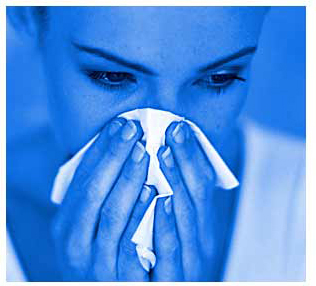 Allergic rhinitis, or the allergic inflammation of the nasal mucous membrane, is a very unpleasant disease affecting about 20% of the population.
Allergic rhinitis, or the allergic inflammation of the nasal mucous membrane, is a very unpleasant disease affecting about 20% of the population.
Diagnosed and treated cases of it, however, present no obstacle to the patient’s work, studies or rest. It is an allergic reaction of the nasal mucous membrane to respiratory allergens.
As part of the reaction, a considerable amount of histamine is released, causing swelling in the mucous membrane and increased discharging in the nose, sinuses, and the mucous membrane of the eyes.
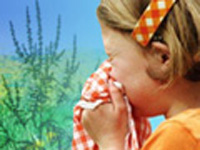 The disease usually runs in families (i.e. several members of a family suffer from it). About 20% of all children and 15-30% of all adults are affected. It is estimated that about 75% of the children suffering from asthma have allergic rhinitis.
The disease usually runs in families (i.e. several members of a family suffer from it). About 20% of all children and 15-30% of all adults are affected. It is estimated that about 75% of the children suffering from asthma have allergic rhinitis.
Depending on the allergen and the clinical symptoms, two types of allergic rhinitis are differentiated: seasonal hay fever and perennial allergic rhinitis.
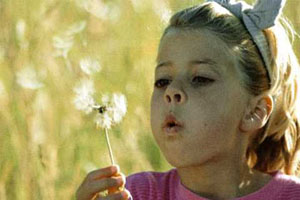
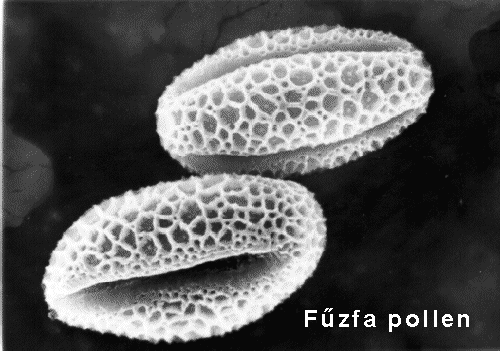 The most common form of allergy is hay fever, which is a specific immediate reaction occurring on the mucous membrane in certain seasons.
The most common form of allergy is hay fever, which is a specific immediate reaction occurring on the mucous membrane in certain seasons.
The clinical description is typical in the case of seasonal hay fever.
Certain pollens acting as allergens appear in the air and trigger the symptoms. Typical symptoms include itching in the nose, a blocking in breathing through the nose, or a full blockage of the nose.
Sneezing and sneezing attacks are common. Nasal discharge is usually watery. Temporarily decreased or completely absent olfaction can also occur.
Permanent olfactory disturbance (dysosmia) can sometimes occur due to damage in the sensory epithelium.
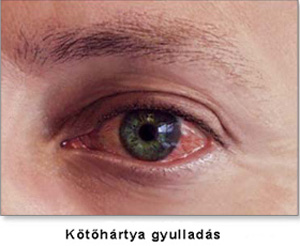
 Inflammation of the mucous membrane can also accompany allergy.
Inflammation of the mucous membrane can also accompany allergy.
Patients typically feel as if their heads are heavy and blunt as well as unpleasantly full.
A general sense of illness can occur, together with fever and lack of appetite. Various neurovegetative dysfunctions can also occur, sometimes making the patient unable to work.
In some cases bacterial superinfection and complications also occur, adding their symptoms to the others.
 History: allergic rhinitis is caused by inhaled allergens.
History: allergic rhinitis is caused by inhaled allergens.
In the individual sensitive to them, the allergens cause, through immunglobulines (IgE mediation), an immediate (type 1) allergic reaction on the mucous membrane of the nasal cavity and accessory cavities. 
A quick inflammation process develops in the organs affected by the allergic shock, i.e. the mucous membrane of the nose, the conjunctiva, and other membranes.
The quick reaction releases inflammation causing histamines and histamine-like materials from the tissues, walls of blood vessels and some components of blood. These materials cause a dilation of blood vessels, sanguinity, swelling, and a flow of liquids from blood vessels, resulting in a blockage of the nose, discharge and itching.
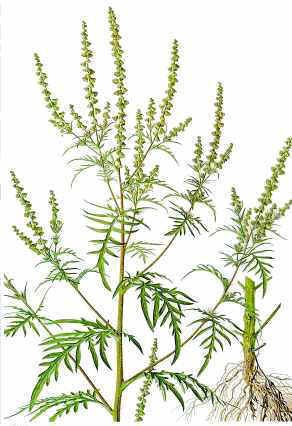
 Seasonal allergies are caused by pollens. Pollens are male germs (15-30 micrometers) necessary for the reproduction of plants.
Seasonal allergies are caused by pollens. Pollens are male germs (15-30 micrometers) necessary for the reproduction of plants.
Most complaints are about the pollen of wind-pollenated plants.
About 15-20 pollens per cubic meter of air can already cause symptoms. Colorful insect-pollenated flowers and blooms rarely cause allergies.
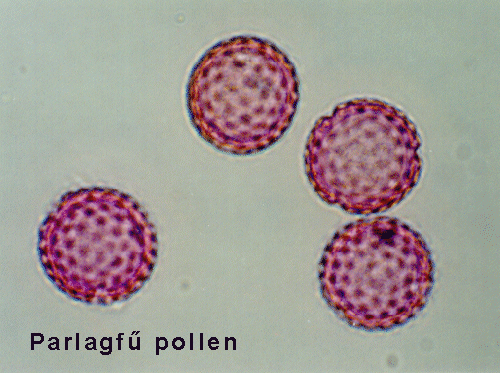
 The most active allergen in Hungary is the common ragweed (Ambrosia elatior), which was originally a weed of the great plains of the United States, brought to Hungary in infected grain shipments in the early 20th century.
The most active allergen in Hungary is the common ragweed (Ambrosia elatior), which was originally a weed of the great plains of the United States, brought to Hungary in infected grain shipments in the early 20th century.
At first it grew contained to some areas, but by today it has spread to the entire territory of the country.
It matures by July, its pollen distribution becoming intensive by late July, early August. Due to their small size, the pollen deposites in the upper respiratory system, the nasal mucous membrane and the conjunctiva, causing a hay fever. The common ragweed and ragweed allergy are almost completely unknown in Western European countries, according to some opinions, because in the cooler late summer months there the plant cannot mature, or because there are fewer weed infested waste fields.
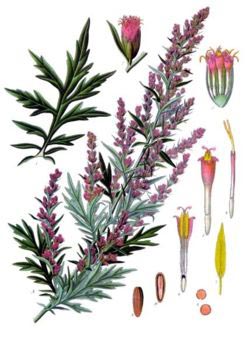 The common wormwood (Artemisia vulgaris) is a weed which is similarly common to the common ragweed. It is a strong allergen whose period of flowering is the same as the ragweed’s. Sensitivity to both plants is common.
The common wormwood (Artemisia vulgaris) is a weed which is similarly common to the common ragweed. It is a strong allergen whose period of flowering is the same as the ragweed’s. Sensitivity to both plants is common.
The pollen of birch trees (Betula varicosa) is a common allergen.
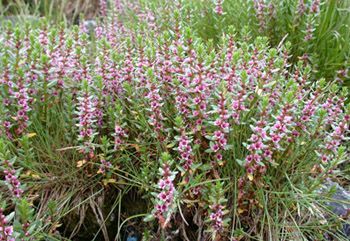 The pollen of some spring and summer grasses are also common allergens, including plantain (Plantago), rye grasses (Poa), perennial rye-grass (Lolium), and twitch (Agropyron).
The pollen of some spring and summer grasses are also common allergens, including plantain (Plantago), rye grasses (Poa), perennial rye-grass (Lolium), and twitch (Agropyron).
Grass and other plant allergens cause hay fever, while allergy to house dust, cockroaches, cat hair and dog hair causes asthma. Ragweed can cause both hay fever and asthma.
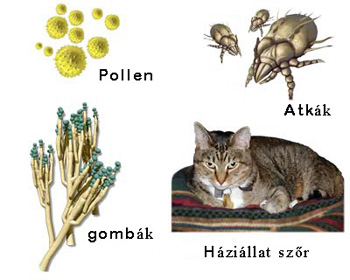 Perennial allergic reactions are caused by inhaled allergens, regardless of season, such as mold, animal hair, house dust, and mites; by allergens contained in food such as fish, strawberries, nuts, eggs, milk, and flour etc.; by “occupational” allergens such as flour (bakers), hair and dandruff (hairdressers); or by bacterial allergens and parasites.
Perennial allergic reactions are caused by inhaled allergens, regardless of season, such as mold, animal hair, house dust, and mites; by allergens contained in food such as fish, strawberries, nuts, eggs, milk, and flour etc.; by “occupational” allergens such as flour (bakers), hair and dandruff (hairdressers); or by bacterial allergens and parasites.
Other causes: another reason for the development of allergy is the overacidification of the body.
The poisonous materials produced in an overacidified body can greatly contribute to the development of allergic symptoms. As a result of insufficient metabolism, undigested larger protein molecules and amino acids cannot be processed.
These are treated as foreign materials by our body, producing an allergic reaction. The restoration of metabolism and deacidification can help allergy as well. During an allergic reaction, histamines are released, triggering a decomposition of salt and a production of sodium bicarbonate in the stomach. If you are experiencing allergic reactions, your body might be acidifying.
Diagnosis: The history is typical.
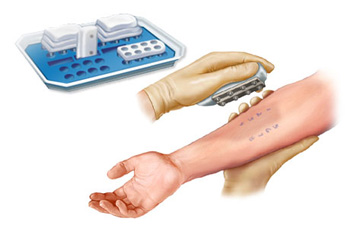 Laboratory examinations: Saliva and cell diagnostics.
Laboratory examinations: Saliva and cell diagnostics.
Intercutaneous skin test, Prick-test, epicutaneous skin tests.
Provocation test on the nasal mucous membrane with nasal rhinomanometric control. Isolation of antibodies in blood serum (IgE-definition). Radio-allergo-sorbent-test (RAST).
Local findings: Pale, bluish-purple memrane, which can turn bright red in the acute phase. Nasal conchae are swollen. Heavy, watery discharging.
Differential diagnosis:
vazomotoric rhinopathia, other rhinitis.
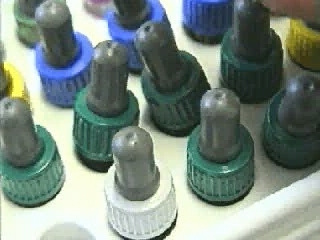 Treatment: causal treatment is recommended:
Treatment: causal treatment is recommended:
Specific hyposensibilitizing (according to allergen), preferably pre-season (in case of pollinosis, in the fall).
To be repeated several years in a row. - Withdrawing the allergen (e.g. in mountains). - Change of profession, if necessary. - In addition: applying disodium cromoglicicum (Intal), locally or generally, thereby preventing the release of histamine and serotonin from mast cells.
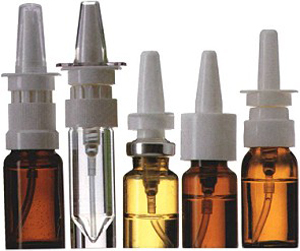 Treatment of symptoms: antihistamines, corticosteroids (special mixtures for local application)
Treatment of symptoms: antihistamines, corticosteroids (special mixtures for local application)
Observation is important since corticosteroids can reduce the mucous membrane and vasoconstrictive nose drops can have side effects.
Development of polyps or of permanent swelling of the mucous membrane require surgical intervention.
Causal treatment
In causal treatment, the most important steps are the deacidification of the body through alkaline food intake and alkaline food supplements.
We recommend supplements which use natural substances to supplement missing alkaline intake and bind superfluous acids.
The product recommended by us contains a unique mixture of 49 different organically grown vegetables, grasses, leaves and sprouted grains. It contains more than 125 natural vitamins, minerals and amino acid, which makes the maximal absorption of bases possible. It has an energizing effect and helps the oxygen intake of blood from water. It is a strong oxygen catalyst and helps the optimal functioning of body cells. It alkalinizes the body and reduces acid levels.
The powder recommended by us has to be taken during the day dissolved in water. This product can significantly reduce acid level, detoxify and energize in a matter of a few weeks.
For more information,
read the product information or manufacturer’s homepage.
With other questions, call at +36-20-397 4144 or send email to
This email address is being protected from spambots. You need JavaScript enabled to view it.
Diseases of the accessory sinuses and the deep respiratory system as well as nasal and sinus polyps can develop.
Superinfection and allergy
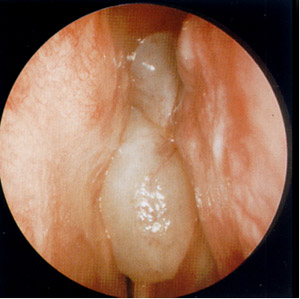 Bacteria and viruses can act as allergens, although their practical role as such is questioned by many today. This type of allergy can be divided into three forms on the basis of the course of the disease:
Bacteria and viruses can act as allergens, although their practical role as such is questioned by many today. This type of allergy can be divided into three forms on the basis of the course of the disease:
(a) Allergic reaction typical of bacterial and viral causes, with no clinical infection (e.g. parasites in nasal mucous membrane)
(b) Allergic reaction following bacterial or viral infection (e.g. chronic baterial rhinitis or sinusitis, sensitivization to pathogen)
(c) Superinfection of tissue already altered by allergy (where the pathogen is not the same as the allergen).
Course of disease, prognosis:
Usually positive. With advancing in age, the patient’s allergic symptoms decrease. Disease can sometimes turn into bronchial asthma (and vice versa).
Hits: 6297